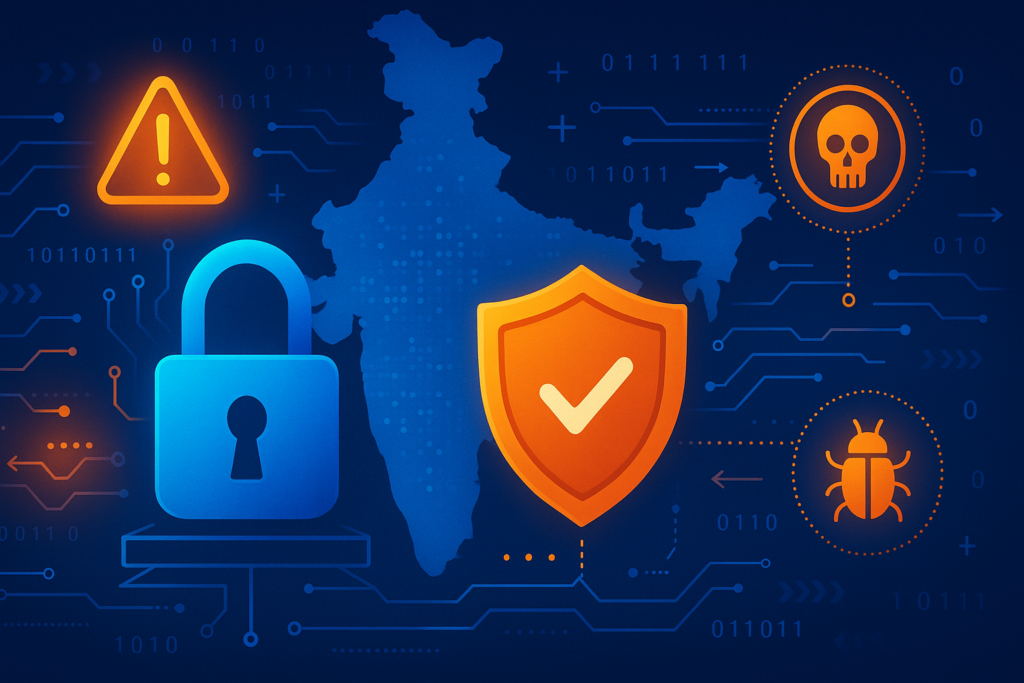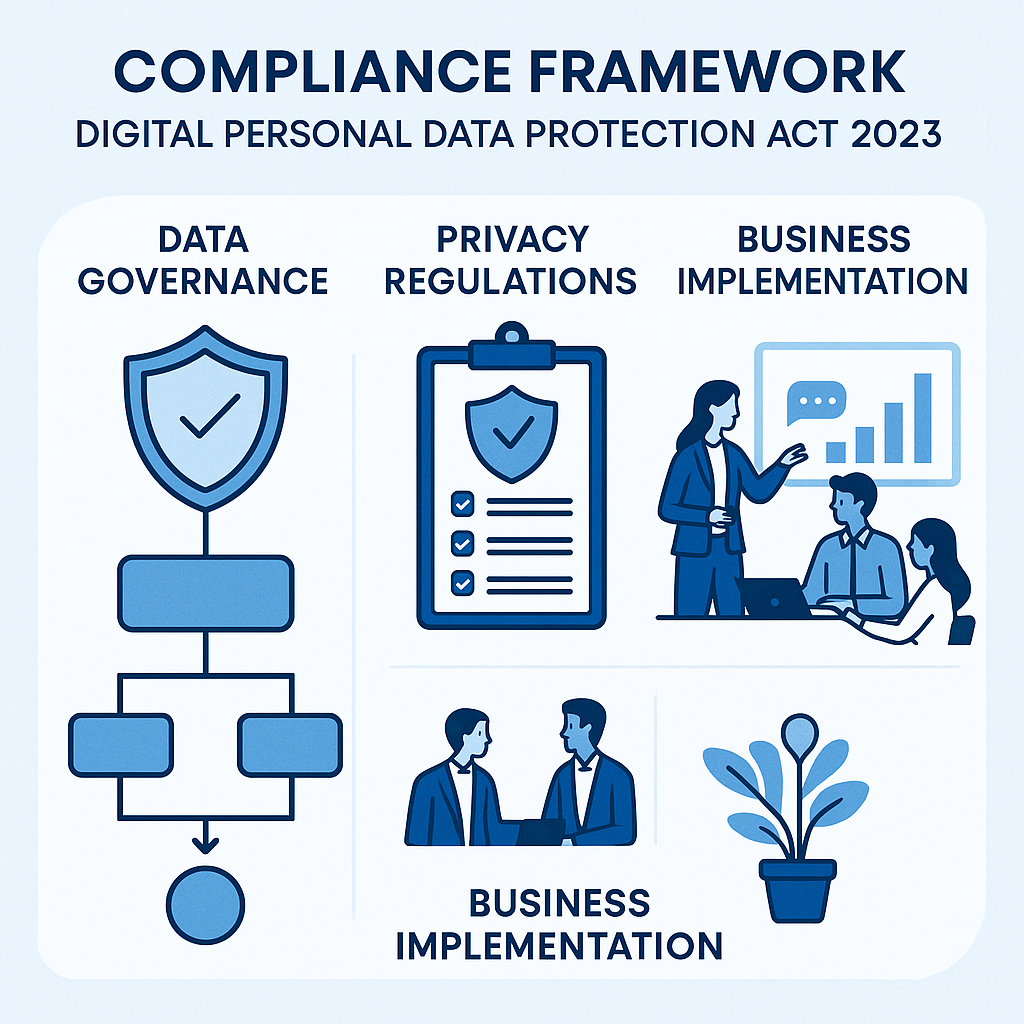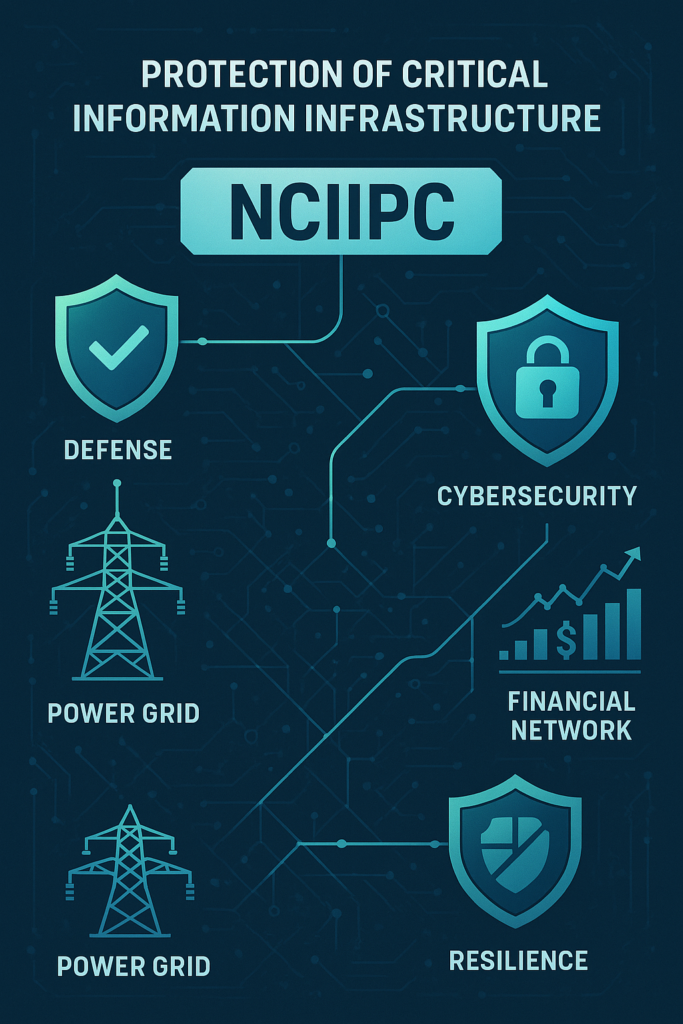Key Highlights
- Staggering Threat Volume: India faced 369.01 million malware detections across 8.4 million endpoints in 2024, averaging 702 potential security threats every minute or 11 threats every second
- Evolving Attack Patterns: Trojans dominated at 43.25%, followed by Infectors at 34.10%, with 14.56% behavior-based detections indicating sophisticated malware evading traditional signature-based defenses
- Legal Framework Strengthening: Digital Personal Data Protection Act 2023 introduces penalties up to ₹250 crore for data breaches, with comprehensive compliance requirements for data fiduciaries and processors
- National Response Infrastructure: CERT-In operates 24×7 as national cybersecurity agency, supported by NCIIPC for critical infrastructure, I4C for cybercrime coordination, and 155 empaneled security audit organizations
- Critical Infrastructure Vulnerability: Over 1.5 million cyberattacks targeted Indian websites post-Pahalgam incident, with 7 APT groups from Pakistan, Bangladesh, Indonesia attempting breaches of government, banking, healthcare sectors

The Magnitude of India’s Cyber Threat Landscape
India’s digital transformation has created an unprecedented cybersecurity challenge, with the Data Security Council of India (DSCI) and Seqrite’s comprehensive analysis revealing the staggering scale of threats facing the nation. The 369.01 million malware detections across 8.4 million endpoints represent more than just numbers—they reflect the relentless assault on India’s digital infrastructure. seqrite
Breaking down the threat intensity: With 702 detections per minute, this translates to approximately 11 new cyber threats emerging every second somewhere in India. This constant barrage demonstrates the persistent nature of modern cyber warfare and the enormous pressure on security systems nationwide.
The geographical distribution of attacks reveals strategic targeting patterns. Telangana leads with 15.03% of detections, followed by Maharashtra (12.84%) and Karnataka (10.67%). These technology hubs attract cybercriminals due to their concentration of IT infrastructure and valuable data repositories.
Evolving Attack Methodologies and Threat Vectors

The Troublesome Trio: Dominant Malware Types
Trojan attacks constitute the largest threat category at 140.48 million detections (43.25%), demonstrating cybercriminals’ preference for deceptive infiltration methods. Trojans masquerade as legitimate software while secretly compromising system security and stealing sensitive information.
Infectors follow closely with 110.75 million detections (34.10%), representing self-replicating malware that spreads across systems and networks. These infectious agents can rapidly compromise entire organizational networks if not contained quickly.
Worms account for 27.38 million detections (8.43%), showcasing their ability to propagate independently across networks without human intervention. Network worms exploit vulnerabilities in connected systems to achieve widespread distribution.
Behavior-Based Detection Evolution
A critical development is the increase in behavior-based detections from 12.5% to 14.56%. This shift indicates that attackers are creating more sophisticated malware capable of evading traditional signature-based detection methods. Behavior-based analysis becomes crucial for identifying unknown threats and zero-day exploits.
Signature-based detection still handles 85.44% of detections, indicating the persistence of known threats. However, the growing reliance on behavioral analysis demonstrates the evolution of both attack strategies and defensive capabilities.
Recent High-Impact Cyber Incidents
Post-Operation Sindoor Cyber Campaign
The massive cyberattack campaign following the Pahalgam terror strike exemplifies geopolitical cyber warfare targeting India. Over 1.5 million cyberattacks targeted Indian websites, with seven Advanced Persistent Threat (APT) groups primarily linked to Pakistan, Bangladesh, Indonesia, and Middle Eastern entities orchestrating the assault.
Attack characteristics included:
- 150 successful intrusions out of 1.5 million attempts
- Targeted sectors: Government, Banking, Financial Services, Insurance (BFSI), Healthcare, Critical Infrastructure
- Attack vectors: Phishing, DDoS attacks, Malware injections
- Attribution: Pakistan-backed APTs and regional hacktivist groups
CERT-In’s rapid response involved real-time threat intelligence, alert dissemination to critical sectors, and coordination with affected organizations for immediate remediation.
“Dance of the Hillary” Malware Campaign
A Pakistan-linked malware campaign demonstrated sophisticated social engineering combined with advanced persistent threat techniques. This targeted operation focused on government officials and defense personnel through spear-phishing attacks.
Campaign methodology:
- Social media reconnaissance of target personnel
- Customized phishing emails with political themes
- Multi-stage payload delivery systems
- Data exfiltration through encrypted channels
Legal and Regulatory Framework Evolution
Digital Personal Data Protection Act 2023
The DPDP Act 2023 represents a watershed moment in India’s data protection landscape, establishing comprehensive obligations for data fiduciaries and processors. The Act’s extraterritorial application covers data processing outside India if it involves offering goods or services to Indian users.
Key compliance requirements include:
Explicit consent mechanisms for data processing
Data Protection Officers (DPOs) appointment for oversight
Detailed audit logs of processing activities
Grievance redressal systems for individuals
Cross-border data transfer compliance with government-approved countries
Penalty structure creates significant financial consequences:
- Breach of duty: Up to ₹10,000
- Failure to notify data breaches: Up to ₹200 crore
- Children’s data protection violations: Up to ₹200 crore
- Maximum penalty: ₹250 crore for security safeguard failures

IT Act 2000 and Sectoral Frameworks
The Information Technology Act 2000 provides the foundational legal framework for cybersecurity governance, with Section 70B establishing CERT-In as the national cybersecurity agency. Section 70A created NCIIPC for critical infrastructure protection. pib
Regulatory evolution includes:
- National Cyber Security Policy 2013 establishing strategic objectives
- CERT-In directions for incident reporting and security practices
- Sectoral CERT establishment for specialized domains
- International cooperation frameworks with global CERTs meity
National Cybersecurity Infrastructure
CERT-In: The Digital Guardian
CERT-In operates as India’s premier cybersecurity agency, designated under Section 70B of the IT Act 2000. The organization functions as a 24×7 national Computer Emergency Response Team, coordinating incident response and crisis management across all sectors.
CERT-In capabilities encompass:
- Real-time threat monitoring through National Cyber Coordination Centre (NCCC)
- Automated threat intelligence exchange platforms
- Cyber security incident reporting and response
- Vulnerability advisories and countermeasure recommendations
- International coordination with global CERT networks
Empaneled ecosystem: CERT-In has empaneled 155 security auditing organizations to support implementation of information security best practices across government and critical sectors.
National Critical Information Infrastructure Protection Centre (NCIIPC)
NCIIPC protects Critical Information Infrastructure (CII), defined as computer resources whose incapacitation would have debilitating impact on national security. The center provides threat intelligence, situational awareness, and vulnerability information to organizations operating critical systems.
Protection scope includes:
- Power grids and energy systems
- Financial networks and payment systems
- Transportation infrastructure
- Government communication systems
- Defense establishments

Indian Cybercrime Coordination Centre (I4C)
I4C coordinates cybercrime response across law enforcement agencies, addressing the jurisdictional challenges inherent in cross-border cybercrimes. The center facilitates information sharing between state police forces and central agencies.
I4C functions:
- Cybercrime trend analysis
- Capacity building for law enforcement
- Citizen awareness programs
- International cooperation on cybercrime investigations
Sectoral Cybersecurity Initiatives
Financial Sector Protection
Computer Security Incident Response Team-Finance Sector (CSIRT-Fin) operates under CERT-In’s umbrella to address financial sector-specific threats. The financial sector faces unique challenges from payment fraud, digital banking attacks, and cryptocurrency-related crimes.
2024 financial cybercrime statistics reveal:
- Phishing attacks account for 35% of financial losses averaging $5.5 million per incident
- Ransomware incidents cause $7.1 million average losses
- Basel III compliance reduces fraud risks significantly
- AI-driven fraud monitoring shows efficiency gaps requiring enhancement
Government Sector Security
National Informatics Centre (NIC) mandates periodic security audits of government websites and applications through CERT-In-empaneled agencies. Vulnerability assessment covers both software applications and underlying hardware infrastructure.
Government cybersecurity measures:
- Mandatory security audits for all e-governance platforms
- Global security standards compliance requirements
- Regular cyber security mock drills
- Cyber Swachhta Kendra for botnet cleaning and malware analysis
Emerging Threats and Technology Challenges
AI-Powered Cyber Attacks
Artificial Intelligence integration in cyberattacks represents a paradigm shift in threat sophistication. AI-driven attacks can automate reconnaissance, scale attack operations, and evade detection systems through adaptive behavior.
AI threat manifestations:
- Deepfake technology for social engineering
- Automated phishing campaigns with personalized content
- Machine learning for vulnerability discovery
- AI-generated malware variants
Cloud Environment Vulnerabilities
62% of malware detections occurred in cloud environments, highlighting the security challenges of digital transformation. Cloud adoption accelerates organizational agility but introduces new attack surfaces and shared responsibility complexities.
Cloud security challenges:
- Misconfigurated cloud services
- Inadequate access controls
- Data residency and sovereignty concerns
- Third-party integration vulnerabilities
IoT and Connected Device Threats
Internet of Things (IoT) expansion creates billions of potential entry points for cybercriminals. IoT devices often lack adequate security controls, making them attractive targets for botnet recruitment and lateral movement.
IoT security concerns:
- Default credential exploitation
- Firmware vulnerability persistence
- Network segmentation inadequacies
- Device lifecycle management challenges
Industry-Specific Threat Analysis
Healthcare Sector Vulnerabilities
Healthcare organizations face unique cybersecurity challenges due to sensitive patient data and life-critical systems. Ransomware attacks on healthcare infrastructure can directly endanger lives by disrupting medical services.
Healthcare threat vectors:
- Medical device compromise
- Electronic health record systems attacks
- Telemedicine platform vulnerabilities
- Supply chain infiltration through medical equipment
Manufacturing and Industrial Control Systems
Industrial Control Systems (ICS) and Supervisory Control and Data Acquisition (SCADA) systems face increasing cyber threats from state-sponsored actors and cybercriminal groups. Operational Technology (OT) networks traditionally isolated from IT networks now require integrated security approaches.
Industrial cybersecurity challenges:
- Legacy system vulnerabilities
- Real-time operation requirements limiting security controls
- Remote access necessity during operational continuity
- Supply chain component integrity verification
International Cooperation and Threat Intelligence
Global CERT Network Participation
CERT-In maintains active membership in international cybersecurity communities, including Task Force for Computer Security Incident Response Teams and Trusted Introducer accreditation. This international recognition facilitates cross-border incident response and threat intelligence sharing.
International cooperation benefits:
- Real-time threat intelligence sharing
- Coordinated response to global cyber campaigns
- Best practice exchange and capacity building
- Attribution support for complex investigations
Geopolitical Cyber Warfare
State-sponsored cyber activities increasingly target Indian critical infrastructure and strategic assets. Advanced Persistent Threat groups linked to neighboring countries conduct long-term espionage and sabotage operations.
Nation-state threat characteristics:
- Sophisticated attack techniques and custom malware
- Long-term persistence in compromised networks
- Strategic targeting of government and defense sectors
- Coordinated campaigns across multiple vectors
Future Cybersecurity Challenges and Solutions
Zero Trust Architecture Implementation
Zero Trust security models assume no implicit trust and require continuous authentication and authorization for all users and devices. Zero Trust implementation becomes crucial as traditional perimeter defenses prove inadequate against modern threats.
Zero Trust components:
- Identity and access management with multi-factor authentication
- Network segmentation and micro-segmentation
- Continuous monitoring and behavioral analysis
- Least privilege access controls
Cybersecurity Skill Development
India faces significant cybersecurity talent shortages, with demand exceeding supply across all sectors. Skill development initiatives must address both technical capabilities and strategic understanding of evolving threats.
Capacity building priorities:
- University curriculum enhancement
- Industry certification programs
- Public-private partnership in training delivery
- Continuous professional development frameworks
Regulatory Framework Evolution
Cybersecurity regulations must evolve to address emerging technologies and threat vectors. Regulatory frameworks require regular updates to maintain relevance in the rapidly changing cyber threat landscape.
Future regulatory considerations:
- AI and machine learning governance
- Quantum computing security implications
- Cross-border data governance
- Supply chain security mandates
Public-Private Collaboration Models
Cyber Surakshit Bharat Initiative
Cyber Surakshit Bharat promotes cybersecurity awareness and capacity building across government and private sectors. The initiative facilitates knowledge sharing and collaborative defense strategies.
Initiative components:
- Cybersecurity awareness campaigns
- Industry best practices dissemination
- Threat intelligence sharing platforms
- Joint exercises and simulation programs
Information Sharing and Analysis Centers (ISACs)
Sector-specific ISACs enable confidential threat intelligence sharing among industry peers. Financial services, energy, and telecommunications sectors benefit from collaborative threat analysis.
ISAC advantages:
- Real-time threat sharing
- Sector-specific threat analysis
- Anonymized incident reporting
- Collective defense strategies
Conclusion
India’s cybersecurity landscape in 2025 presents a complex tapestry of unprecedented threats and evolving defensive capabilities. The 369.01 million malware detections across 8.4 million endpoints demonstrate the relentless nature of cyber adversaries targeting India’s digital transformation journey.
The emergence of behavior-based detection at 14.56% of total detections signals a fundamental shift in both attack sophistication and defensive evolution. Cybercriminals are developing more advanced techniques to evade traditional security measures, necessitating adaptive defense strategies and continuous innovation.
Legal frameworks like the Digital Personal Data Protection Act 2023 provide robust regulatory foundations with penalties up to ₹250 crore for security failures. However, implementation challenges require organizational transformation and significant investment in compliance infrastructure.
CERT-In’s 24×7 operations and the comprehensive national cybersecurity infrastructure including NCIIPC, I4C, and sectoral CERTs demonstrate India’s commitment to coordinated cyber defense. The empanelment of 155 security audit organizations creates an ecosystem approach to cybersecurity governance.
International cooperation through global CERT networks and threat intelligence sharing enhances India’s defensive capabilities against sophisticated state-sponsored threats. The 1.5 million cyberattacks post-Pahalgam incident underscore the geopolitical dimensions of modern cybersecurity challenges.
Emerging technologies including AI-powered attacks, cloud vulnerabilities, and IoT expansion create new attack surfaces requiring innovative security approaches. Zero Trust architectures and continuous authentication become essential components of modern cybersecurity strategies.
Public-private collaboration through initiatives like Cyber Surakshit Bharat and sector-specific ISACs demonstrates the necessity of coordinated defense against sophisticated adversaries. Cybersecurity is no longer purely a technical challenge but a strategic imperative requiring whole-of-society approaches.
The skill development challenge remains critical, with demand exceeding supply across all sectors. Investment in cybersecurity education, professional development, and capacity building becomes essential for sustainable defense.
As India continues its digital transformation journey, cybersecurity resilience will determine the success of digital initiatives and the protection of national interests. The lessons learned from 2024’s threat landscape provide valuable insights for strengthening defenses and preparing for future challenges.









+ There are no comments
Add yours